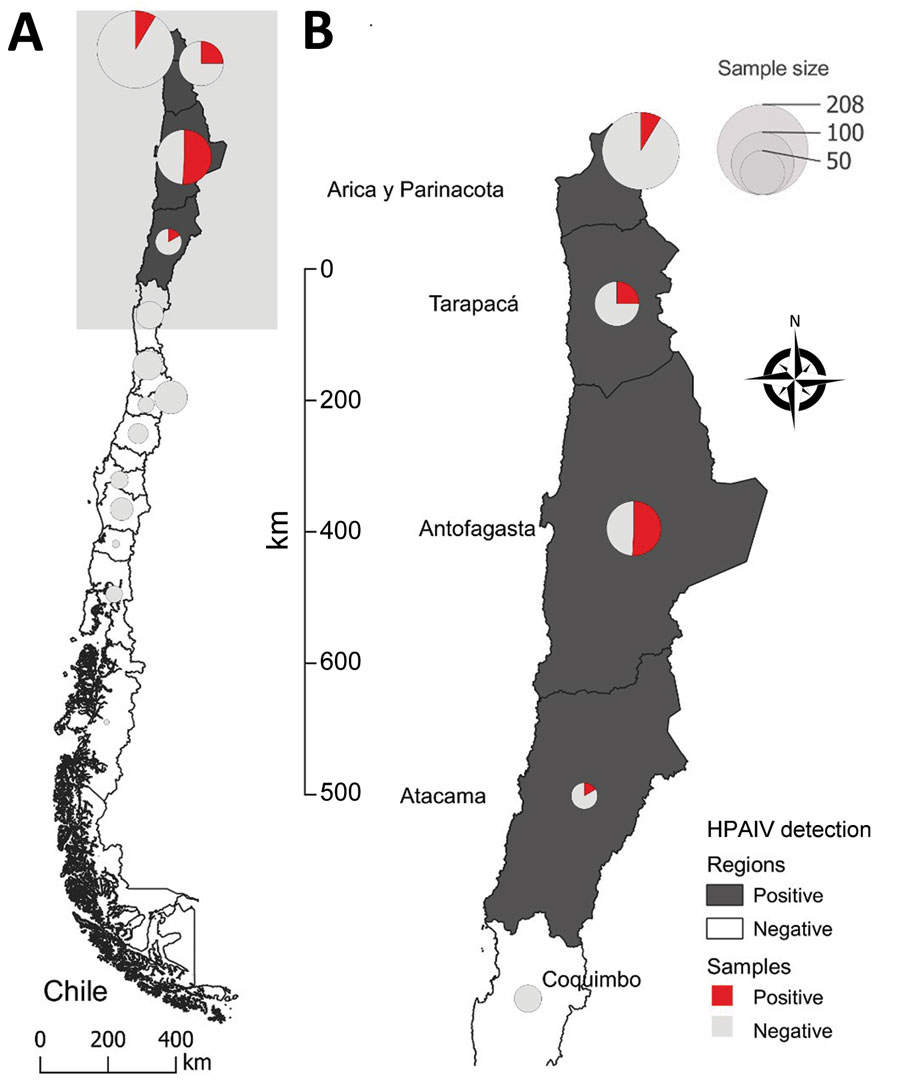Volume 29, Number 9—September 2023
Dispatch
Highly Pathogenic Avian Influenza A(H5N1) Clade 2.3.4.4b Virus in Wild Birds, Chile
Figure 1

Figure 1. Distribution of samples collected and tested for HPAIV H5N1 clade 2.3.4.4b virus in wild birds, Chile. A) Map of Chile shows regions positive and negative for HPAIV. B) Detail of area in which affected birds were sampled. Size and color of circles indicate sample size and percent positivity. HPAIV, highly pathogenic avian influenza virus.
1These first authors contributed equally to this article.
Page created: June 15, 2023
Page updated: August 20, 2023
Page reviewed: August 20, 2023
The conclusions, findings, and opinions expressed by authors contributing to this journal do not necessarily reflect the official position of the U.S. Department of Health and Human Services, the Public Health Service, the Centers for Disease Control and Prevention, or the authors' affiliated institutions. Use of trade names is for identification only and does not imply endorsement by any of the groups named above.